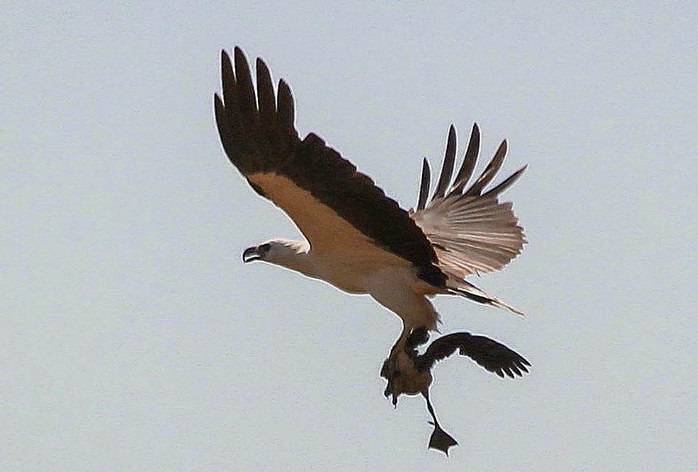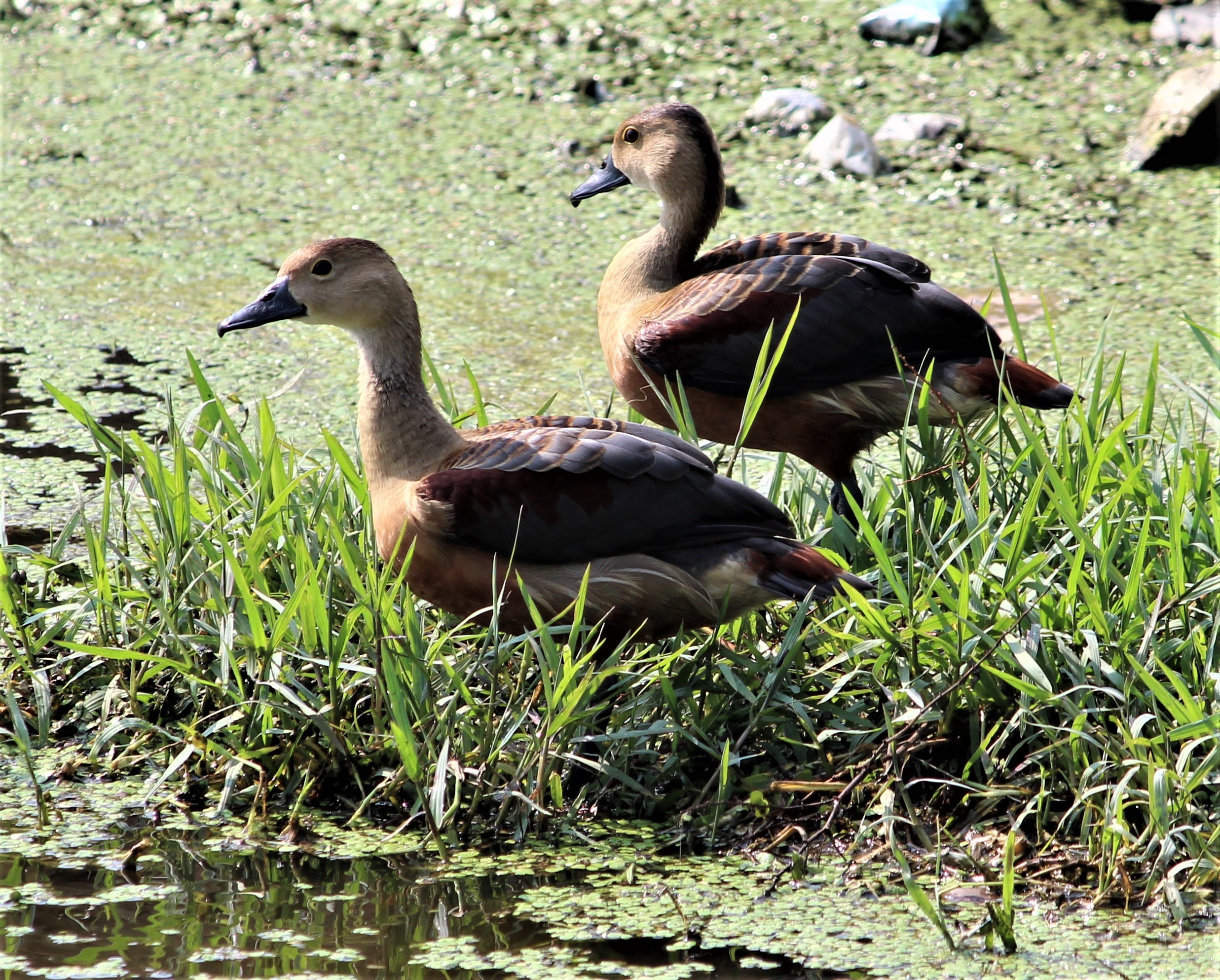Lesser Whistling Teal on:
[Wikipedia]
[Google]
[Amazon]
The lesser whistling duck (''Dendrocygna javanica''), also known as Indian whistling duck or lesser whistling teal, is a species of
 This is a largely resident species distributed widely across lowland
This is a largely resident species distributed widely across lowland  Large numbers are sometimes found in urban wetlands such as in
Large numbers are sometimes found in urban wetlands such as in

 Lesser whistling duck are usually
Lesser whistling duck are usually
Call recordingsVideos and other media on the Internet Bird Collection
{{Authority control
whistling duck
The whistling ducks or tree ducks are a subfamily, Dendrocygninae, of the duck, goose and swan family of birds, Anatidae. In other taxonomic schemes, they are considered a separate family, Dendrocygnidae. Some taxonomists list only one genus, ...
that breeds in the Indian subcontinent and Southeast Asia. They are nocturnal feeders that during the day may be found in flocks around lakes and wet paddy fields. They can perch on trees and sometimes build their nest in the hollow of a tree. This brown and long-necked duck has broad wings that are visible in flight and produces a loud two-note wheezy call. It has a chestnut rump, differentiating it from its larger relative, the fulvous whistling duck
The fulvous whistling duck or fulvous tree duck (''Dendrocygna bicolor'') is a species of whistling duck that breeds across the world's tropical regions in much of Mexico and South America, the West Indies, the southern United States, sub-Sahar ...
, which has a creamy white rump.
Description
This chestnut brown duck is confusable only with thefulvous whistling duck
The fulvous whistling duck or fulvous tree duck (''Dendrocygna bicolor'') is a species of whistling duck that breeds across the world's tropical regions in much of Mexico and South America, the West Indies, the southern United States, sub-Sahar ...
(''D. bicolor'') but has chestnut upper-tail coverts
A covert feather or tectrix on a bird is one of a set of feathers, called coverts (or ''tectrices''), which cover other feathers. The coverts help to smooth airflow over the wings and tail.
Ear coverts
The ear coverts are small feathers behind t ...
unlike the creamy white in the latter. The ring around the eye is orange to yellow. When flying straight, their head is held below the level of the body as in other ''Dendrocygna'' species. The crown appears dark and the sexes are alike in plumage
Plumage () is a layer of feathers that covers a bird and the pattern, colour, and arrangement of those feathers. The pattern and colours of plumage differ between species and subspecies and may vary with age classes. Within species, there can b ...
. They fly slowly but with rapid wing-flapping and usually produce a repetitive wheezy ''seasick'' call as they circle overhead. They are very nocturnal
Nocturnality is a ethology, behavior in some non-human animals characterized by being active during the night and sleeping during the day. The common adjective is "nocturnal", versus diurnality, diurnal meaning the opposite.
Nocturnal creatur ...
and often rest during the day. The outermost primary feather has the inner vane modified. They produce very prominent whistling sound while flying.
Distribution and habitat
wetland
A wetland is a distinct semi-aquatic ecosystem whose groundcovers are flooded or saturated in water, either permanently, for years or decades, or only seasonally. Flooding results in oxygen-poor ( anoxic) processes taking place, especially ...
s of the Indian subcontinent
The Indian subcontinent is a physiographic region of Asia below the Himalayas which projects into the Indian Ocean between the Bay of Bengal to the east and the Arabian Sea to the west. It is now divided between Bangladesh, India, and Pakista ...
and Southeast Asia. The species also occur on islands in the region including the Andamans
The Andaman Islands () are an archipelago, made up of 200 islands, in the northeastern Indian Ocean about southwest off the coasts of Myanmar's Ayeyarwady Region. Together with the Nicobar Islands to their south, the Andamans serve as a mari ...
, Nicobars
The Nicobar Islands are an archipelagic island chain in the eastern Indian Ocean. They are located in Southeast Asia, northwest of Aceh on Sumatra, and separated from Thailand to the east by the Andaman Sea. Located southeast of the Indian sub ...
and Maldives
The Maldives, officially the Republic of Maldives, and historically known as the Maldive Islands, is an Archipelagic state, archipelagic country in South Asia located in the Indian Ocean. The Maldives is southwest of Sri Lanka and India, abou ...
. They sometimes make local movements in response to weather and changes in water availability and the more northern birds winter
Winter is the coldest and darkest season of the year in temperate and polar climates. It occurs after autumn and before spring. The tilt of Earth's axis causes seasons; winter occurs when a hemisphere is oriented away from the Sun. Dif ...
further south. They are found in freshwater wetlands with good vegetation cover and often rest during the day on the banks or even on the open sea in coastal areas. Downy chicks are black with a white eyebrow and white patches on the back of the head, the wing, lower back and rump. Albino
Albinism is the congenital absence of melanin in an animal or plant resulting in white hair, feathers, scales and skin and reddish pink or blue eyes. Individuals with the condition are referred to as albinos.
Varied use and interpretation of ...
individuals have been seen in the wild.
 Large numbers are sometimes found in urban wetlands such as in
Large numbers are sometimes found in urban wetlands such as in Kolkata
Kolkata, also known as Calcutta ( its official name until 2001), is the capital and largest city of the Indian state of West Bengal. It lies on the eastern bank of the Hooghly River, west of the border with Bangladesh. It is the primary ...
and Goa
Goa (; ; ) is a state on the southwestern coast of India within the Konkan region, geographically separated from the Deccan highlands by the Western Ghats. It is bound by the Indian states of Maharashtra to the north, and Karnataka to the ...
, particularly during winter. In the Alipore Zoological Gardens
The Zoological Garden, Alipore (also informally called the Alipore Zoo or Kolkata Zoo) is India's oldest formally stated zoological park (as opposed to royal
and British menageries) and a big tourist attraction in Kolkata, West Bengal. It has ...
, captive individuals were introduced in the 1930s and wild birds joined this nucleus subsequently.
With a wide distribution range between 1 and 10 million km², they are considered to have a secure global population of between two and twenty million individuals. They are not threatened by hunting as they are not considered good to eat. Hunters in Assam
Assam (, , ) is a state in Northeast India, northeastern India, south of the eastern Himalayas along the Brahmaputra Valley, Brahmaputra and Barak River valleys. Assam covers an area of . It is the second largest state in Northeast India, nor ...
however have been known to raise the ducklings to serve as live decoy.
Behaviour and ecology

 Lesser whistling duck are usually
Lesser whistling duck are usually gregarious
Sociality is the degree to which individuals in an animal population tend to associate in social groups (gregariousness) and form cooperative societies.
Sociality is a survival response to evolutionary pressures. For example, when a mother was ...
. They feed mainly on plants taken from the water as well as grains from cultivated rice apart from small fish, frog
A frog is any member of a diverse and largely semiaquatic group of short-bodied, tailless amphibian vertebrates composing the order (biology), order Anura (coming from the Ancient Greek , literally 'without tail'). Frog species with rough ski ...
s and invertebrates such as mollusc
Mollusca is a phylum of protostome, protostomic invertebrate animals, whose members are known as molluscs or mollusks (). Around 76,000 extant taxon, extant species of molluscs are recognized, making it the second-largest animal phylum ...
s and worm
Worms are many different distantly related bilateria, bilateral animals that typically have a long cylindrical tube-like body, no limb (anatomy), limbs, and usually no eyes.
Worms vary in size from microscopic to over in length for marine ...
s. They dabble as well as dive in water. They will often waddle on the land and Common myna
The common myna or Indian myna (''Acridotheres tristis''), sometimes spelled mynah, is a bird in the Family (biology), family Sturnidae, native to Asia. An omnivorous open woodland bird with a strong territorial instinct, the common myna has ada ...
s have been noted to follow them on grass. Courtship involves the male facing the female and dipping and raising its bill in the water and swimming around the female. They breed during the monsoon
A monsoon () is traditionally a seasonal reversing wind accompanied by corresponding changes in precipitation but is now used to describe seasonal changes in Atmosphere of Earth, atmospheric circulation and precipitation associated with annu ...
or rainy season and may vary locally in relation to the food availability. The nest site may be a tree hole lined with twigs and grass or built in the fork of a large tree, sometimes reusing an old nest of a kite
A kite is a tethered heavier than air flight, heavier-than-air craft with wing surfaces that react against the air to create Lift (force), lift and Drag (physics), drag forces. A kite consists of wings, tethers and anchors. Kites often have ...
or heron
Herons are long-legged, long-necked, freshwater and coastal birds in the family Ardeidae, with 75 recognised species, some of which are referred to as egrets or bitterns rather than herons. Members of the genus ''Botaurus'' are referred to as bi ...
or even on the ground. The clutch varies from 7 to 12 white eggs that are incubated by both the parents. Large clutches of up to 17 have been noted although these may be indications of intraspecific brood parasitism
Brood parasitism is a subclass of parasitism and phenomenon and behavioural pattern of animals that rely on others to raise their young. The strategy appears among birds, insects and fish. The brood parasite manipulates a host, either of the ...
. The eggs hatch after about 22–24 days. More than one brood may be raised in a single season. Young birds may sometimes be carried on the back of the parents.
Local names like ''sili'' and ''silhahi'' in India are based on their wheezy two-note calls. They become very tame in captivity, walking about and responding to whistles. Individuals in captivity in the USA have lived for up to 9 years.
Several endoparasitic cestode
Cestoda is a class of parasitic worms in the flatworm phylum (Platyhelminthes). Most of the species—and the best-known—are those in the subclass Eucestoda; they are ribbon-like worms as adults, commonly known as tapeworms. Their bodies co ...
s including ''Hymenolepis javanensis'' and ''Cittotaenia sandgroundi'' have been described from lesser whistling duck hosts apart from ectoparasitic bird lice and mite
Mites are small arachnids (eight-legged arthropods) of two large orders, the Acariformes and the Parasitiformes, which were historically grouped together in the subclass Acari. However, most recent genetic analyses do not recover the two as eac ...
s.
References
External links
Call recordings
{{Authority control
lesser whistling duck
The lesser whistling duck (''Dendrocygna javanica''), also known as Indian whistling duck or lesser whistling teal, is a species of whistling duck that breeds in the Indian subcontinent and Southeast Asia. They are nocturnal feeders that during ...
Birds of Indomalaya
lesser whistling duck
The lesser whistling duck (''Dendrocygna javanica''), also known as Indian whistling duck or lesser whistling teal, is a species of whistling duck that breeds in the Indian subcontinent and Southeast Asia. They are nocturnal feeders that during ...